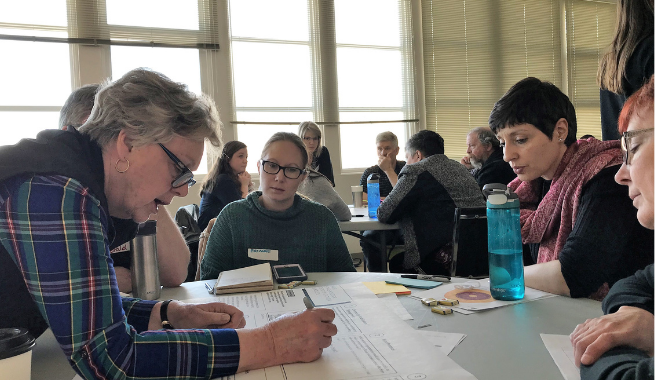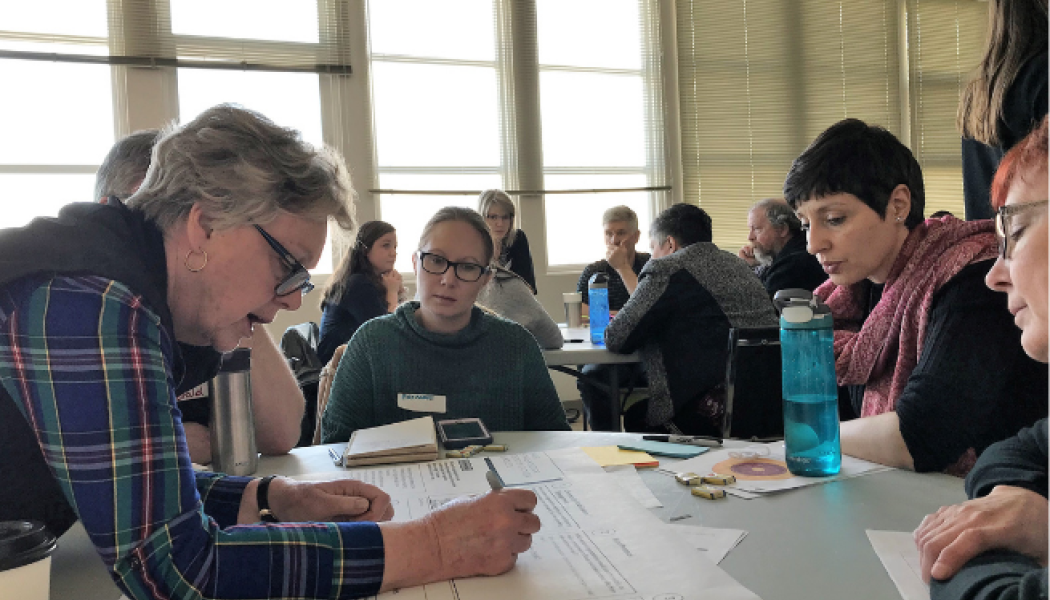Pictured above: a 2019 community workshop on extreme heat
It might feel like the middle of winter, but Interior Health's Healthy Communities team is hard at work helping communities prepare for the extreme heat of summer.
The interior region of B.C. is home to some of the hottest communities in Canada. Current research tells us that temperatures will continue to rise, and extreme heat events will last longer in the future.
Although each community had a different experience, the June 2021 'heat dome' impacted all of us. Extremely hot temperatures lasted for several days, and overnight temperatures remained high, offering little relief from the heat. Times like these of intense heat with no break can have many negative impacts on health, particularly for elderly people and those with existing chronic conditions. Preparing in advance for these extreme heat events will help to keep people in our communities healthy and safe during extreme weather.
Community partners are essential
Recent events have taught us that community partners such as local governments play a vital role when it comes to preparing communities for heat events and protecting the health of citizens.
Over the past four years, Interior Health has received grant funding from Health Canada and the Pacific Institute for Climate Solutions to work with communities and help them understand the health impacts of extreme heat.
Since 2018, Interior Health has developed and delivered workshops focused on responding to extreme heat. These community-focused workshops took place in Kelowna, Ashcroft, Osoyoos, Lytton, and Kamloops.
These community engagements resulted in the development of a Heat Alert & Response Planning Toolkit for Interior BC Communities to provide community partners with practical information and resources they can use when developing and implementing strategies to respond to extreme heat.
About the Healthy Communities program
We work with local governments, communities, school districts/schools and families in the Southern Interior for better health and well-being. Through engagement and advocacy we influence equity, public policies, physical and social environments and protecting the public. We know that it takes a collaborative effort to address the social determinants of health and other factors that keep us well, and health cannot be achieved by one sector alone.














